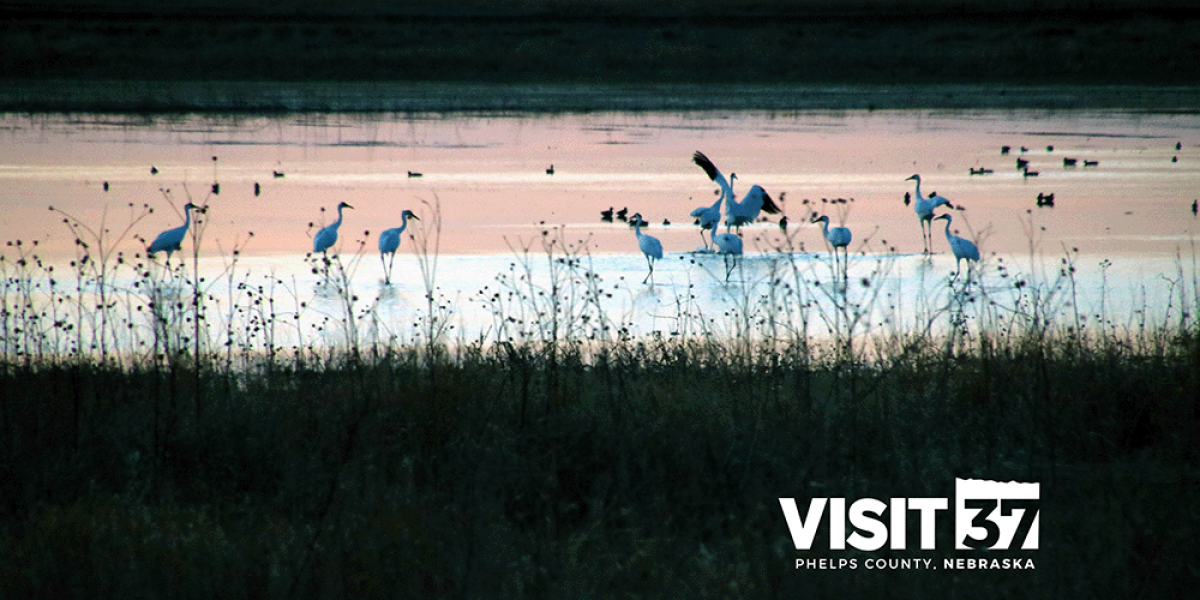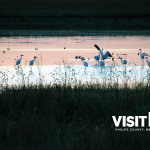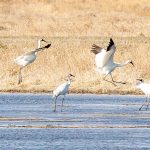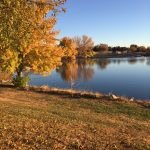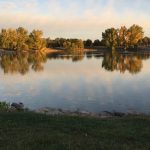My Phelps County Whooping Crane Adventure
By Kristine Jacobson, Phelps County Tourism
For three years, I had been hoping to catch a glimpse of a rare Whooping Crane.
At one time, only about 20 of these majestic birds lived in the world. Today, an estimated 600 are flying around, thanks to conservation efforts.
The Funk WPA
It just so happens that I live 10 miles away from one of their favorite stopping points on their Spring Migration – The Funk Waterfowl Production Area.
We don’t often know the treasures that exist in our backyards.
The Funk WPA is a 2,000-acre wetland preserved and managed by the US Fish & Wildlife Service’s Rainwater Joint Basin. It hosts more than 250 species of migratory birds and is a prime stopping point for snow geese, ducks, and Whooping Cranes.
My recent venture into promoting tourism in my area prompted me to learn more about the Funk WPA and the Whooping Cranes. The WPA is part of the conservation efforts to save the Whooping Cranes, and it’s a special place for birds, wildlife, plants, and people who enjoy nature. It has a 3-mile trail, which was designated as a National Recreational Trail in 2008. A handicapped accessible wooden walkway takes visitors directly into the Rainwater Basin for an up-close view of nature.
For the past three years, my husband and I would venture out to the WPA each spring seeking to spot the white cranes amidst the WPA’s winter brown landscape. More than 30 Whooping Cranes have stopped at the Funk WPA the past two springs. Yet, I never saw one.
The “Whoopers” are 5 feet tall with a wingspan of 7 feet. You would think they would be easy to spot. It’s all a mater of timing.
Whooper Sightings
On the second day of spring this year, a friend excitedly shared with me that the Whoopers were back early this year. She had seen seven of them! I was at an event I couldn’t leave, but my mind raced to when I could find time for a crane-seeking adventure.
The next morning, my husband and I set out on our adventure, hoping the cranes would still be there. We drove every gravel road around the WPA. We saw flocks of ducks and red-winged blackbirds seemingly guarding the area on top of the brown wetland plants. But, no whooping cranes.
The following evening, my husband called after a meeting and said, “Be ready in five minutes. We’re going to look for the cranes!”
I almost declined the invitation. It was 15 minutes until sunset, and I was busy with home projects. But I decided to grab my camera, slip on my shoes, and hope for the best.
We came in a different route this time on the wetland’s northern road. My husband was driving rather fast for a gravel road, but since we were chasing the sunset, I didn’t mind.
Our eyes scanned the wetland for specks of white. Nothing. We turned south to head toward the areas with water, again driving rather fast. No one else was there except a blue pickup truck with a topper parked in a grassy parking area.
Right after we saw the truck, we looked up to the east, and there they were! Ten Whooping Cranes were flying in the sky just to our left. At first, I couldn’t believe my eyes. It was like seeing Santa Claus in the sky!
They flew right over the blue pickup truck, and we guessed those visitors got the photographs of a lifetime!
The majestic cranes flew in formation, and we could see their distinctive, black-tipped wings, and their black legs dragging behind them. They turned right toward the water, and we followed them like we were storm chasers.
Capturing the Moment
I pointed my camera toward the sky, hoping to get a few good photographs. Then, we watched them peacefully descend into the large pond among the ducks and other birds gathered there for the night.
We pulled to the side of the road and watched with binoculars and a camera. We were several hundred yards away so we wouldn’t disturb these endangered birds. They stood playfully in the water, jumping and flapping their wings, almost as if saying “hello.”
The spring winds had decided to rest just a few hours before creating still waters for the cranes. With the backdrop of a purplish/pink spring sunset, it was a beautiful and peaceful scene watching the cranes enjoy their stopping place for the night.
I zoomed in with my 600 millimeter lens as far as I could and snapped a few photos to remember the moment. I really wished I had had a longer lens. I felt a sense of peace and happiness watching the birds rest for the night in my own backyard.
Welcome Whoopers! I’m glad I finally met you!
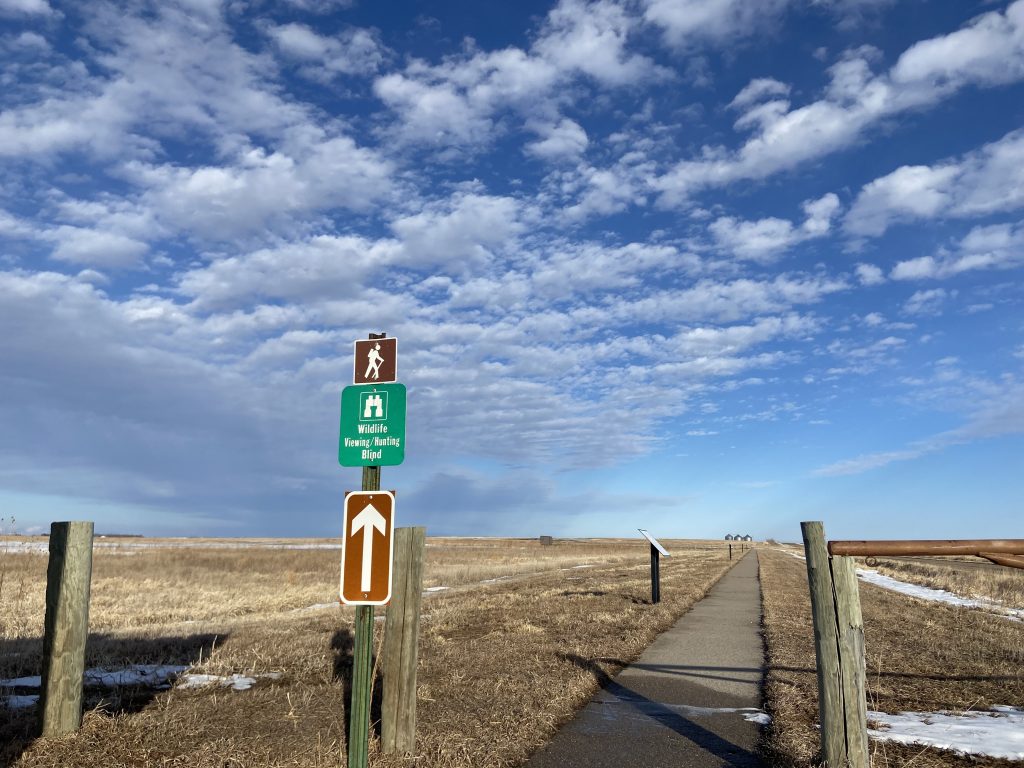
For more information about the Funk Waterfowl Production Area and birding in Phelps County, visit the Visit 37 birding page.


